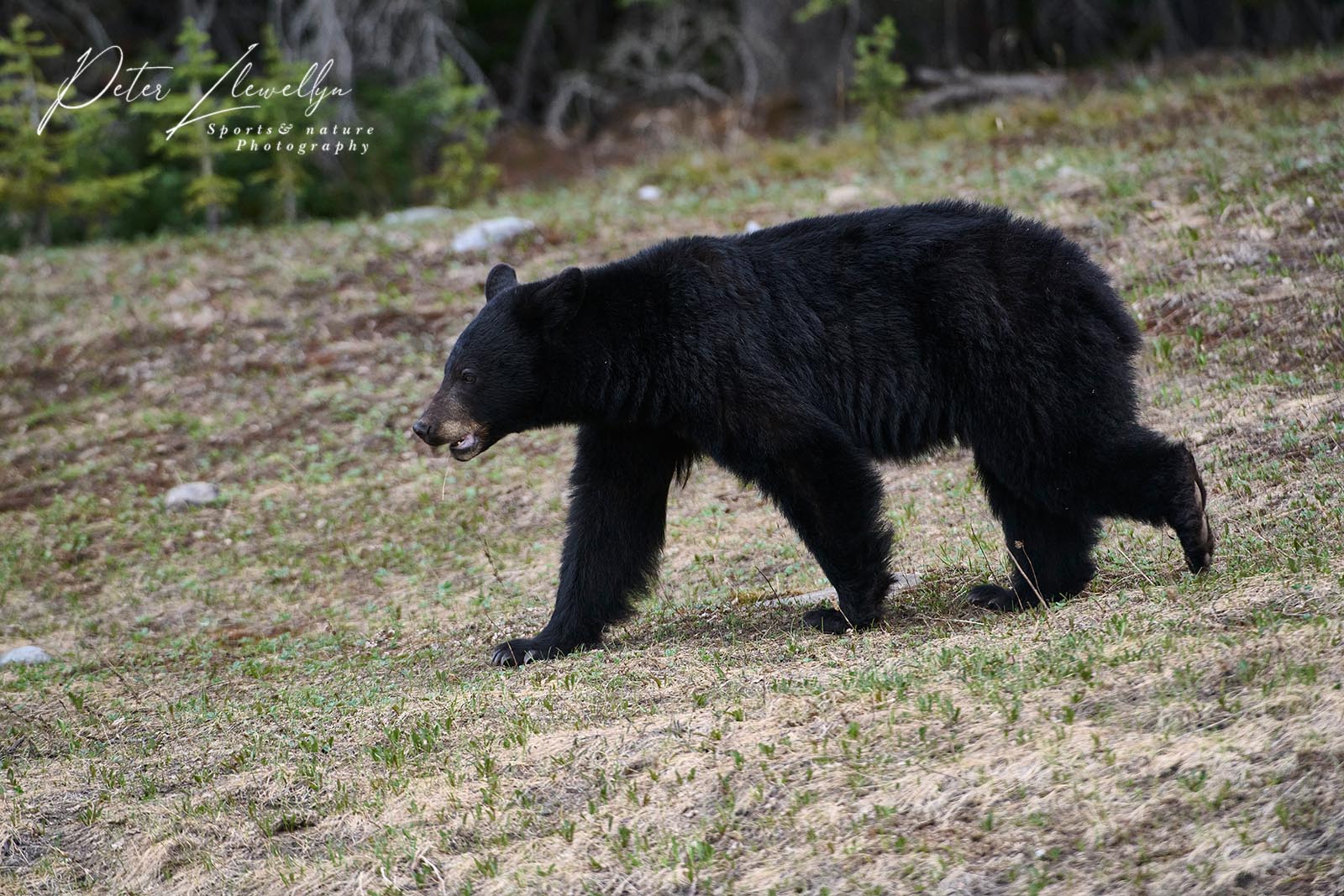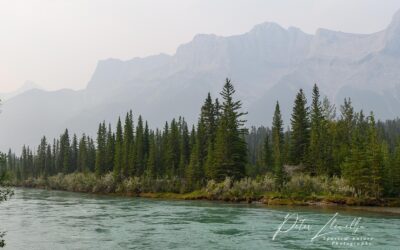Learning about bears
Are bears dangerous? Well, yes and no. It depends entirely on the circumstances, and your own knowledge. Get between a mother and her cubs and you are asking for trouble. Get inside a bears comfort zone – yep that’s dangerous. Ride a mountain bike full tilt down a mountain path and startle a bear, asking for trouble. Sit quietly watching a bear who is completely aware you are there and showing no signs of agitation, I do it safely all the time. Stay in your car for bears near the road, no one has been injured doing that.

Very rare white mutation of American black bear (Ursus americanus), Spary Lakes Provincial Park, Kananaskis Country, Alberta, . This genetic mutation from a recessive gene prevents the bear producing melanin
Nikon D850, Nikon 500mm f4 lens with TC 14 converter, 1/1250sec @ f5.6, ISO 1100, manual mode with auto ISO, +0.7 exposure compensation. Gitzo tripod with Flexshooter Pro head.
Do you want to know more facts about bears? Stop watching When Bears Attack etc. on TV. Mostly sensationalist nonsense to attract viewers. There are dozens of bear books out there, but, in my opinion, one stands out above all others. ‘What Bears Teach us’ by local author Sarah Elmeligi and illustrated by photographer John E. Marriot. Available on Amazon and other online book stores. In my opinion this should be compulsory reading for anyone venturing out into bear country!

Cinnamon coated American black bear (Ursus americanus) takes a stroll down a gravel road, Spray Lakes Provincial Park, Kananaskis Country, Alberta, Canada .
Nikon D850, Nikon 70-200 f2.8 lens at 185mm, 1/1600th @ f6.3, ISO 400, Aperture priority automatic. Yep – I stayed firmly in the car for this one!
Photographing bears
Bears are among my all time favourite subjects. Mostly they are active early mornings and late evenings so get out accordingly. (During the fall they can be more active during the full day as they feed up for hibernation) To get great photos the bears need to be relaxed and you need to be safe. Observe what the bear is doing. Long lenses are the order of the day. If you don’t have a long enough lens don’t approach within a bears comfort zone, simply shoot environmental images of bears in the landscape, they are just as effective. If a bear stops what it is doing and looks wary, you are too close or it huffs, pops it’s jaws, or flattens it’s ears you are wwway too close!

Cinnamon coated American black bear (Ursus americanus), Spray Lakes Provincial Park, Kananaskis Country, Alberta, Canada .
Nikon D850, Nikon 500mm f4 lens, 1/800th @ f4 ISO 1600, Aperture priority automatic. Photographed from my car window with lens resting on bean bag.
Long lenses require good support. A bean bag resting on a car window frame works very well when shooting from a vehicle. Use a tripod when outside the car.
Be careful with exposure, especially when shooting darker bears. It is often necessary to open up between one and two stops to get detail into the fur of a dark furred black bear. Note, not all black bears are black, and not all brown bears (grizzly bears) are brown. Both species come in a variety of shades.

Young American black bear (Ursus americanus), Spary Valley Provincial Park, Kananaskis Country, Alberta, Canada
Finally
- Be respectful of bears to ensure both you and they remain safe
- Always follow warning signs and advice given by guides and park rangers
- Don’t stop on the road when it’s unsafe to do so, bear jams are a major headache in National Parks
- Never carry food on your person or in your vehicle when in bear country, bears have amazing sense of smell. Remember, a fed bear is a dead bear!
- Carry bear spray, and know how to use it. That can of bear spray needs to be where you can get at it, if it’s in your backpack it’s useless!
To see more of my bear images and other wildlife click here
P.S. As I write this a glance out of my window shows the visibility is down to less than 100 yards, the air being thick with smoke from the BC forest fires, just the other side of the Rocky Mountains. My thoughts are with those fighting these fires, those who have lost property in the devastation, and the wildlife who have lost their lives and whose habitat has been destroyed. No wildlife photography today!




